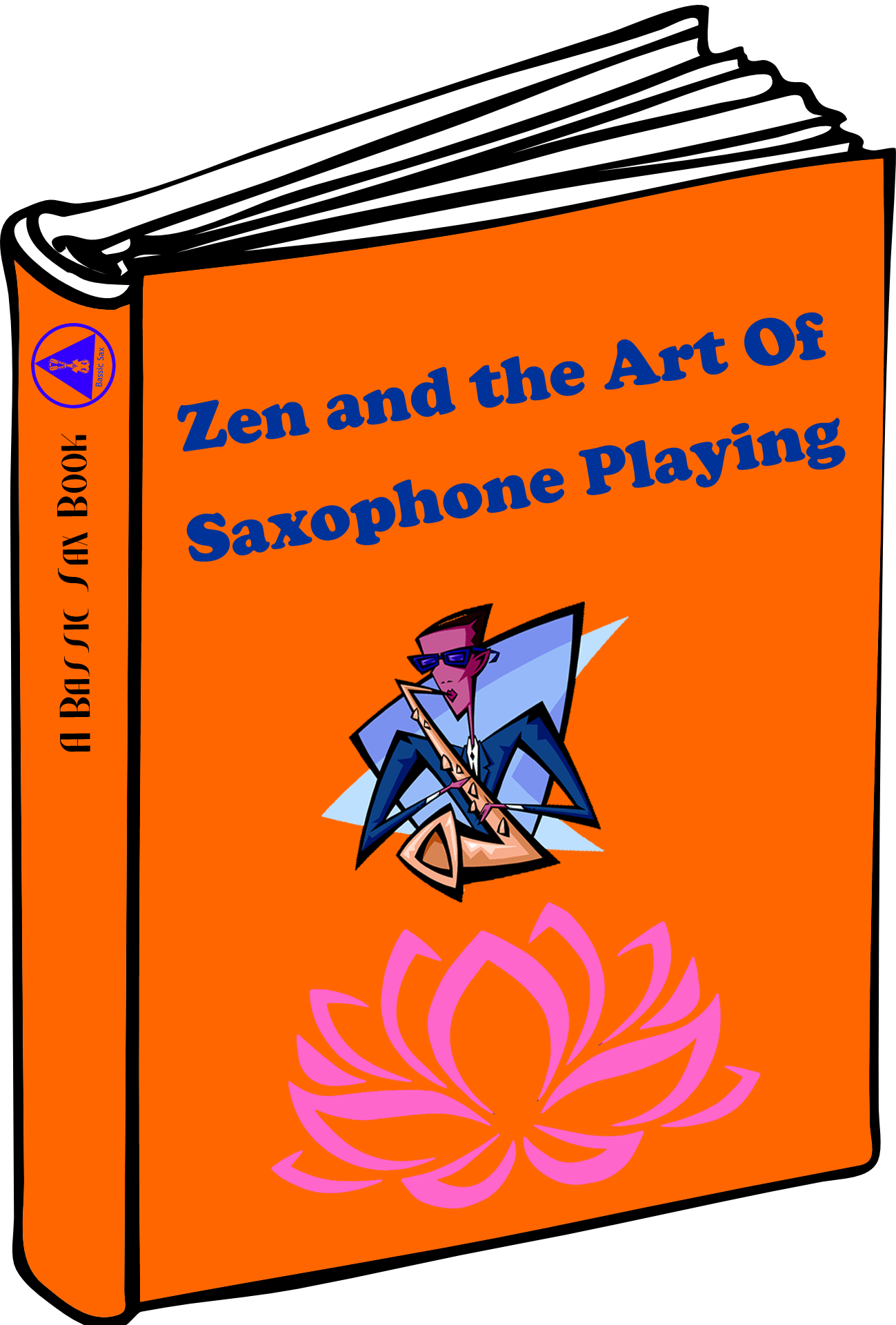The original article Zen and the Art of Saxophone Playing, was written in 2008. This new article builds, in part, on what I wrote 11 years ago. The focus of the 2008 article was playing saxophone, whereas this one focuses on both playing and teaching saxophone. That said, both articles contain elements that are applicable to both teachers and players.
If you haven’t read my original article, it would likely make sense to do so either before or after you read this one. The two pieces view saxophone playing as a form of meditation, just from two slightly different perspectives.
How do you improvise?
One of the things I get asked all the time by students is: How do you improvise? Over the years, I have come to realise that often students are not asking for the explanation of a “how to”, so much as how I do it personally.
When I get asked how I improvise, I have to admit that it is not something I consciously think about. Usually that statement is met with quizzical looks or arched eyebrows. Then I try to explain to them that I am a melodic player: Someone who often uses the melody as the starting point for their improvisational work, while at the same time incorporating the chord changes to make the solo an interesting story with a beginning, climax, and end.
However, I also mention to them that once I’m familiar with the piece of music and its chord changes, I don’t think about them anymore. I just play my saxophone as if I were singing the notes coming from it, since for me, the saxophone and I are one.
Truth be told, even when I’m sight-reading a piece of music with a solo in it, I usually just wing it and hope for the best. More often than not I have an accuracy of about 90% while sight-reading music I’m not familiar with.
When students ask me how I can do that, I have to admit that I am not 100% certain, but there are a number of reasons. Obviously, a large part is practice, and knowing my scales and chords. To aid in this, I always tell students to think in patterns, and become familiar with fingering patterns, because they appear over and over again in closely-related keys and chords.
Becoming a pattern player aids in large part with being able to toss off the shackles of thinking carefully about each and every fingering/note you are about to use when soloing, and just play. Being familiar with patterns also allows a player to not stress about awkward key signatures like F# or C# either. Patterns simply make life easier and allow you to just play.
Zen & the art of saxophone playing: Part 2
This is where the other big part of my soloing comes from: yoga meditation.
Over 10 years ago, when I wrote Zen and the art of saxophone playing, I explored how the meditative act of playing saxophone had been aiding in my recovering from a mysterious neurological attack. Although I never did recover 100% to my pre-illness level of neurological functioning, meditation through playing saxophone continues to play a vital role in not only my performance abilities, but in my overall health.
Playing music can very much be a form of mindfulness meditation. I’m not talking about sitting down at the piano and mindlessly plunking out Chopsticks here. I’m referring to seriously practicing or performing music to the point where your mind is completely tuned out to anything else, and your sole focus is the music.
Mindfulness meditation is described like this:
It brings you and your thoughts into the present, focusing on emotions, thoughts, and sensations that you’re experiencing “in the now.”
Source: verywellmind.com
Feeling the music = mindfulness meditation
If you think about it, it makes sense that when you are truly feeling the music, you are mediating. Meditation can be very simply described as:
…a practice whereby an individual uses a technique – such as mindfulness, or focusing the mind on a particular object, thought or activity – to train attention and awareness, and achieve a mentally clear and emotionally calm and stable state.
Source: wikipedia.com
When I play music, and especially when I solo, I am 100% focused on the music. For me, the rhythm section is what allows me to feel the music. Feeling the music simply a colloquial expression for mindfulness meditation.
I feel the rhythm section, and just seem to know when they are going to change chords. The rhythm section is what gives me ideas for solos. Their rhythms will greatly influence what I play and vice versa. We compliment each other, and feel each other, as we mutually tell the story of the saxophone solo.
Trying to convey this to students just starting out is extremely challenging. Since the rhythm sections they are playing with don’t have any more experience than they do usually, everyone is in the learning phase. Furthermore, nothing will make students’ glaze over faster than taking about airy stuff like meditation.
However, what students do respond well to is feeling the music. As a teacher this is where I try to reach them. I talk to them about how they feel they music they listen to. Transferring that feeling from the music they listen to, to the music they play is the part that may take some practice.
The horn is just an extension of the player and the goal is for the two to achieve a oneness with the music
During lessons I use a variety of recorded tracks that only contain the rhythm section. Getting the student to count the bars while they listen to how the chords change, and where they change, is a great first step in becoming more aware of one’s musical environment. Naturally starting with a simple 12 bar blues progression is the easiest way to start this process with students.
As a player progresses in their technical ability and experience, they will (hopefully) also start to integrate that feeling of being one with their horn, and also with the music.
Different players will attain this feeling of oneness at different times based on whether they have a teacher or not; the time they dedicate to practice; what and how they practice, and so on and so forth. However, it has been my experience that once it clicks for them, their playing will dramatically change.
As teachers, what can we do to help our students achieve oneness?
- Encourage mindful practice during lessons.
- Provide students with a proper outline of what to practice, with timelines for each.
- Listening is seriously underrated. Dedicate a few minutes per lesson on listening to a particular thing. Explain what it is ahead of time. Listen to it. Then discuss it afterwards. This will assist in developing active vs. passive listening.
Take it away Sonny Rollins
This folllow-up article was inspired by the following interview with Sonny Rollins. Rollins should be an inspiration to all sax players for a whole host of reasons, but as an adult educator I love to reference him as the epitome of a life-long learner. Even in his 80s he is still working on learning more about his craft.
I am nowhere near the player that Rollins is, but in this NPR interview he talks about meditation and how you can’t think and play at the same time.




I agree that playing music and zen meditation have something in common.
They are both at a higher level when you can do them without simultaneously formulating your thoughts in words. I always find it difficult to describe the non vocal consciousness it requires, but I agree with Rollins that music and thinking in words in real time do not mix. It looks like you need different parts of your brain, which affects timing.